About the project
Tear gas and torture or other ill-treatment
There is a growing consensus amongst legal experts that some uses of tear gas can constitute torture or other ill-treatment. Torture is defined in international law as the intentional infliction of severe pain or suffering. To be torture the pain or suffering must be inflicted with the intention of eliciting information or a confession, or for the purpose of punishment, and it must be perpetrated either by officials or with their consent or acquiescence (UN Convention against Torture and Other Cruel, Inhuman or Degrading Treatment or Punishment.) Amnesty International have documented numerous cases of severe pain or suffering caused by teargas use, such as severe burning, suffocation and long term breathing problems, as well as instances in which its use is clearly punitive. With this in mind our conclusion is that in these instances the use of tear gas constitute torture under international law.
Nils Melzer, the United Nations Special Rapporteur on torture and other cruel, inhuman or degrading treatment or punishment, has argued that if less lethal weapons such as tear gas are used “intentionally and purposefully to inflict pain or suffering on a powerless person” – for instance when tear gas is fired directly at an individual or used in confined spaces - this would amount to torture or other ill-treatment.
International law imposes specific obligations on States to prevent torture and other ill-treatment, to investigate its occurrences, criminalise complicity in such activities and to provide reparations to the victims. There is a growing recognition that this includes prohibiting the trade in equipment, such as tear gas, where there is a high risk that it would be used to carry out torture and other ill-treatment.
The regulation of the tear gas trade
Despite its widespread misuse, there are no agreed international regulations on the trade in riot control agents such as tear gas. Different states apply different standards, and in some states the trade remains largely unregulated. Few states provide public information on the quantity and destination of tear gas exports, hampering civil society oversight.
For over twenty years, Amnesty International, working closely with The Omega Research Foundation, has been campaigning for greater controls on the production, use and trade in tear gas, and other less lethal weapons. As a result, the UN and regional bodies such as the EU and The Council of Europe have recognised the need to regulate the export of less lethal weapons.
One potential route for the creation of a legally binding international instrument which would control the trade in tear gas is through the recently created Alliance for Torture Free Trade.
On 18 September 2017, the EU, Argentina and Mongolia launched the Alliance for Torture Free Trade on the margins of the UN General Assembly meeting in New York. To date, over 60 States from all regions of the world have joined and the UN has committed to examine the feasibility and scope of common international standards in this area. Amnesty International is campaigning for the inclusion of riot control agents, including tear gas, in any international regulatory framework.
Methodology
From 2018 onwards, Amnesty International started to catalogue videos of current and past instances of misuse of tear gas around the world. Experts in video verification working with the Crisis Evidence Lab, with the help of Amnesty’s Digital Verification Corps (DVC) based at the University of Essex Human Rights Centre, the Centre for Governance and Human Rights at the University of Cambridge, the Human Rights Center at UC, Berkeley, the International Human Rights Law Programme at the University of Toronto, and the Human Rights Centre at the University of Pretoria verified close to 500 videos and highlighted, for this platform, almost 80 events in 22 countries and territories where tear gas has been misused, confirming the location, date, and validity. The teams categorized these videos into five separate types of misuse, including against peaceful demonstrations, vulnerable individuals, in confined spaces, in excessive quantities, and direct fire at individuals. These were selected based, in part, on the UN’s Guidance on Less-Lethal Weapons in Law Enforcement. In January 2021, the platform was updated to include an additional 27 new incidents from 13 countries.
In partnership with the OMEGA Research Foundation, experts in weapon identification, Amnesty analyzed various tear gas canisters and launchers present in the verified media to identify which companies were providing these weapons. Subsequently, Amnesty International contacted these companies to request information on their due diligence policies and procedures for addressing the potential human rights impacts involved in the export of its products and services.
Amnesty International also worked with SITU Research on a virtual reconstruction of how a tear gas canister works. The video includes simulations of how a tear gas canister can act as a projectile, particularly when fired at individuals, as well as how the gas disperses when used excessively or in a confined space. These visualisations provide a more comprehensive understanding of why tear gas canisters have led to so many injuries and some deaths.
A few items to note regarding methods:
Media Evidence
Amnesty International used open-source intelligence (OSINT) research techniques to obtain and verify all of the media assets included in the platform. Many videos were sourced from social media platforms, including, but not limited to, Instagram, Facebook, YouTube, and Twitter. Where necessary, videos were edited to protect the identity of the persons involved. Where possible, we independently acquired testimonies from witnesses and protesters present at the events documented. Many of these testimonies were kept anonymous to protect the person's identity.
Research
The information on the platform was acquired through independent research and interviews with experts in the fields of toxicology and health. The information on chemicals mentioned in the “What’s inside?” section of the platform was primarily taken from The National Center for Biotechnology Information. The information on health consequences mentioned in the “Health Consequences” section of the platform was primarily taken from the U.S. Center for Disease Control and Prevention and from Physicians for Human Rights.
Interviews
Amnesty International approached various experts in the field for interviews on the different aspects of tear gas. Interviews were conducted both in person and remotely. These interviews include:
Rohini Haar, Emergency Physician and Researcher, UC Berkeley
Dr. Rohini Haar is an emergency physician with expertise in health and human rights. Her work focuses on the protection of human rights in times of complex humanitarian crisis and conflict. She is particularly interested in the protection of health workers and health services. She is a research fellow at the Human Rights Center at UC Berkeley’s School of Law and works clinically at Kaiser Medical Center in Oakland, California. Dr. Haar holds an MD from The University of Chicago, Pritzker School of Medicine, and an MPH from Columbia University, Mailman School of Public Health.
Graham Dossett, Policing and Human Rights Expert, University of Essex
Graham Dossett served as a police officer in the United Kingdom for thirty years, retiring with the rank of Superintendent (Higher Grade). Since his retirement from the police service, Graham Dossett completed an LL.M in International Human Rights at the Human Rights Centre, University of Essex. Graham Dossett holds a BA in Policy-Making and Administration and is a Chartered Fellow of the Chartered Institute of Personnel and Development (F.C.I.P.D). He currently works as an independent advisor in the field of policing and human rights. He is a Visiting Fellow of the Human Rights Centre at the University of Essex.
Tara van Ho, Business and Human Rights Expert, University of Essex
Dr. Tara van Ho joined the School of Law and Human Rights Centre in January 2018. Her main research interests are business and human rights, investment law and human rights, economic, social and cultural rights, and transitional justice. She is the co-President of the Global Business and Human Rights Scholars Association and sits on the Editorial Board of the Business and Human Rights Journal. Dr. van Ho is one of the leaders of the Essex Business and Human Rights Project, through which she advises states, intergovernmental organisations, non-governmental organisations, and businesses on issues of business, investment, and human rights. Dr. van Ho studied law at the University of Cincinnati and holds an LLM in International Human Rights Law and PhD in Law from the University of Essex
Anna Feigenbaum, Associate Professor in Communication and Digital Media, Bournemouth University
Dr. Anna Feigenbaum is Associate Professor in Communication and Digital Media at Bournemouth University. Before joining the department of Journalism, English and Communication, she was a Lecturer in Media and Politics at Boston University from 2013-2015. Prior to this, Dr. Feigenbaum taught at Richmond, the American University in London and held fellow positions at the Rutgers University Center for Historical Analysis, the London School of Economics and Political Science, and the Institute for Historical Research at the University of London. She graduated from McGill University in 2008 with a PhD in Communication Studies. Dr. Feigenbaum’s doctoral research on communication and creativity at women's peace camps was supported by the Social Sciences and Humanities Council of Canada and the Beaverbrook Fund at McGill.
Ara Marcen Naval, Former Deputy Director for Arms Control and Human Rights, Amnesty International
Ara Marcen Naval is currently leading the global advocacy for the Defense and Security Program in Transparency International, working towards highlighting the nexus of corruption, conflict and insecurity. Ara is a human rights specialist who previously worked as Deputy Director for Global Issues at Amnesty International, where she headed the organisation’s global research, campaigning and advocacy on issues including the arms trade, torture trade, policing weapons, and use of inhumane weapons around the world, as well as other disarmament related issues. With over two decades in policy development and advocacy, she worked on various arms control issues, including the Arms Trade Treaty and was centrally involved in the global campaign to secure the 2013 Arms Trade Treaty, which entered into force in December 2014 and the Torture Trade that is currently being discussed at the UN level. Ara holds an LLM in Law and a masters in European Union law and policy and a number of specialised courses in Human Rights and International Humanitarian Law.
Companies
Amnesty International contacted the following seven companies whose products appear on the website: Condor Non-Lethal Technologies; Cavim; DJI; Falken; PepperBall; The Safariland Group and Tippmann Sports LLC. These companies manufacture tear gas and associated launchers, and in one case – DJI – drones not specifically designed to launch tear gas. Amnesty International presented them with information about the incidents Amnesty International included in its analysis involving their products and asked a series of questions related to their human rights due diligence policies and procedures.
Two companies, DJI and Tippmann Sports LLC responded substantively. A DJI spokesperson replied saying: “DJI makes products entirely for peaceful purposes, and we deplore any use of our products to cause harm… However, our products are freely available from market sources and we cannot control how they are used, nor do we monitor how customers use them because that would be a violation of our customers' privacy.”
Tippmann Sports LLC gave a detailed response, saying: “Tippmann strongly supports the promotion of human rights practices around the world… We unfortunately cannot comment on the use of our product in the video that you reference since neither Tippmann nor its employees were involved in this incident… We abide by the rigorous debarment policies established by the United States of America government and rely on the government to make determinations on the fitness of states to be able to receive such less lethal products… Tippmann cannot monitor the use of its product in the field and as such does not collect any data on the injuries or deaths caused by its equipment.”
Who is Amnesty International?
Amnesty International is a Nobel Peace Prize-winning global movement of more than 7 million people who campaign for a world where human rights are enjoyed by all. The organization investigates and exposes abuses, educates and mobilizes the public, and works to protect people wherever justice, freedom, truth and dignity are denied.
Who is SITU Research?
SITU Research is a visual investigations practice developing new forms of reporting to cut through digital noise and amplify truth. SITU’s work is used in legal, advocacy and journalistic contexts.
Who is OMEGA Research Foundation?
OMEGA Research Foundation is an independent research organization based in the UK dedicated to providing rigorous, objective, evidence-based research on the manufacture, trade in, and use of, military, security, and police (MSP) technologies.
Note on Vicarious Trauma Protection
Monitoring human rights abuses is traumatic at the best of times, and both Amnesty International and SITU Research took great steps to protect the wellbeing of the research teams throughout the project.
Following tips and guidelines from organizations such as the DART Centre, First Draft News, Amnesty International’s Citizen Evidence Lab, and the Human Rights Resilience Project, we worked to ensure that only those who needed to view the worst of the content did so, that all members of the research teams were able to receive any support they needed, and built a team atmosphere which allowed each member of the team to share their experiences.
Any investigation looking at abuses of international human rights law or international humanitarian law should consider the potential traumatic impact on the investigation team - regardless of whether they are in the field or researching from afar, and should take steps to ensure appropriate support structures are in place.
Photo Credit
“How is it abused?” section photo by Jeremy Bishop on Unsplash
Platform Development
By Xpon Digital


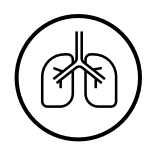





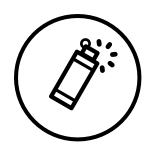





 Not publicly available
Not publicly available


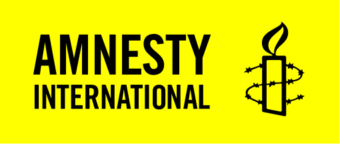




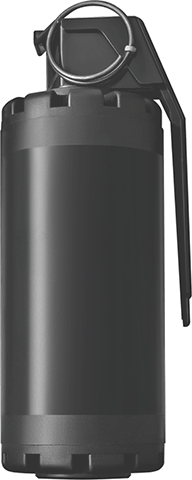



















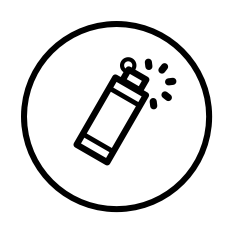






 Lachrymator
Lachrymator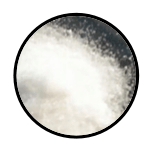 Potassium nitrate
Potassium nitrate Potassium chlorate
Potassium chlorate Magnesium carbonate
Magnesium carbonate Sucrose
Sucrose Nitrocellulose
Nitrocellulose Charcoal
Charcoal









